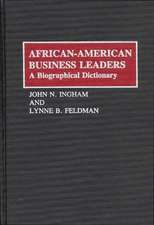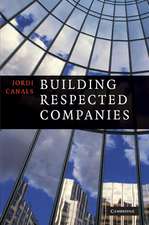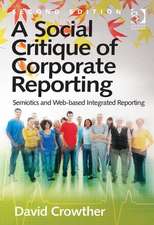The Corporation: Greenwood Guides to Business and Economics
Autor Wesley B. Truitten Limba Engleză Hardback – 29 mai 2006 – vârsta până la 17 ani
Preț: 229.33 lei
Preț vechi: 501.28 lei
-54% Nou
Puncte Express: 344
Preț estimativ în valută:
43.90€ • 47.70$ • 36.90£
43.90€ • 47.70$ • 36.90£
Carte tipărită la comandă
Livrare economică 21 aprilie-05 mai
Preluare comenzi: 021 569.72.76
Specificații
ISBN-13: 9780313336065
ISBN-10: 0313336067
Pagini: 296
Dimensiuni: 156 x 235 x 27 mm
Greutate: 0.59 kg
Editura: Bloomsbury Publishing
Colecția Greenwood
Seria Greenwood Guides to Business and Economics
Locul publicării:New York, United States
ISBN-10: 0313336067
Pagini: 296
Dimensiuni: 156 x 235 x 27 mm
Greutate: 0.59 kg
Editura: Bloomsbury Publishing
Colecția Greenwood
Seria Greenwood Guides to Business and Economics
Locul publicării:New York, United States
Notă biografică
WESLEY B. TRUITT is Professor of Public Policy at Pepperdine University's graduate School of Public Policy in Malibu, California, and former and former Executive-in-Residence at the College of Business Administration, Loyola Marymount University, Los Angeles, specializing in business planning, business-government relations, and international business management. He is also a member of the Persius Consulting Group and serves as an independent management consultant and as advisor to the RAND Corporation. For over 25 years he served in a variety of management positions at the Northrop Grumman Corporation. He speaks to industry groups, business schools, think tanks, and government agencies, and has testified for the U.S. Senate Foreign Relations Committee and the U.S. House Foreign Affairs Committee. He is the author of Business Planning (Quorum, 2001) and What Entrepreneurs Need to Know About Government (Praeger, 2004).
Cuprins
Series ForewordPrefaceChronology of EventsDevelopment of the CorporationTransformation of the CorporationThe Post-Modern CorporationBenefits of the CorporationEstablishment of a CorporationOperating a CorporationCorporations in Other CountriesMultinational CorporationsAppendix: Nestle S.A., Profile of a Multinational CorporationCorporate GovernanceThe Future of the CorporationNotesGlossarySelected BibliographyIndex
Recenzii
Truitt, a practitioner and academic, provides an accessible introduction to the nature of corporations. He begins with an overview of the historical evolution of the corporation as a form of economic organization based on the principles of capitalization and limited liability. Moving from medieval chartered companies through the postmodern corporation, he examines the transformative forces shaping the structure and strategies of contemporary business entities. An instructive example is Wal-Mart, now the largest corporation in the US with gross revenues of $288.1 billion, compared with $193.5 billion for General Motors. Other chapters cover such topics as the benefits accruing to owners and employees of corporations; the legal requirements for creating a corporation; routine operations of a corporation; international comparisons and multinational corporations; corporate governance through boards of directors; and a concluding chapter on the future of the corporation in the global economy..[T]ruitt offers an informative, readable guide to an important, often controversial topic in modern economic life. Glossary of common terms associated with corporations; selected bibliography of books and articles. Recommended. All levels of undergraduates as well as general readers.
Truitt believes the corporation is responsible for making the American economy the largest in the world and for creating the global economy as well. Using examples from major corporations, he traces how the concept of the corporation developed over time from the Middle Ages through the age of imperialism and colonization and on into the postmodern model. He explains the advantages of incorporating and the ways corporations are structured to make best use of these advantages, describes the systems of corporate governance, and analyzes why certain people in certain corporations commit fraud. Along the way he explains historical trends and the ways corporations transformed themselves as well as the corporations to come, and closely examines why some corporations have lasted over 950 years while others seem to fail in 950 nanoseconds.
Truitt believes the corporation is responsible for making the American economy the largest in the world and for creating the global economy as well. Using examples from major corporations, he traces how the concept of the corporation developed over time from the Middle Ages through the age of imperialism and colonization and on into the postmodern model. He explains the advantages of incorporating and the ways corporations are structured to make best use of these advantages, describes the systems of corporate governance, and analyzes why certain people in certain corporations commit fraud. Along the way he explains historical trends and the ways corporations transformed themselves as well as the corporations to come, and closely examines why some corporations have lasted over 950 years while others seem to fail in 950 nanoseconds.



















